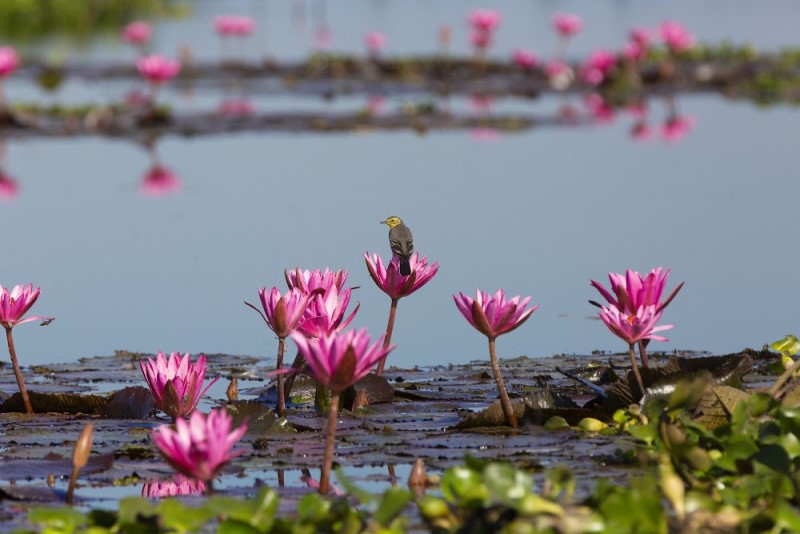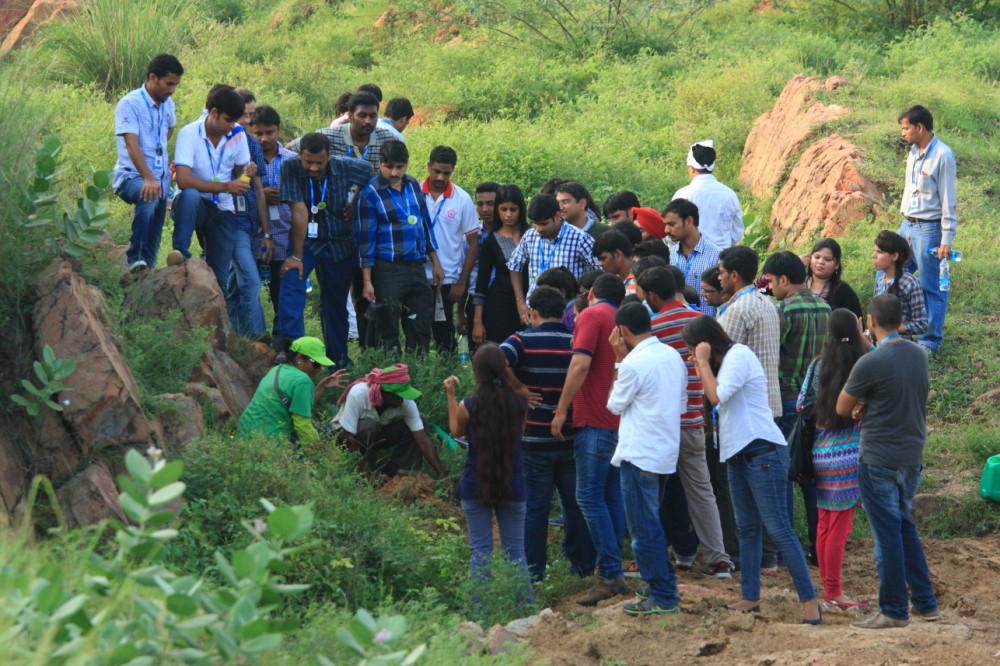India Belongs to the Young
First published in Sanctuary Asia,
Vol. 41
No. 4,
April 2021
...and we want a functional biosphere!
By Divya Kilikar
We have been scrambling to manage our most recent global crisis for over a year. COVID-19 has served as a wake-up call, forcing us to address our broken relationship with nature. Through the trauma and uncertainties of dealing with a pandemic, Indian citizens, especially the young, are immersing themselves passionately into the environmental conservation movement.
We took to campaigning for the hundreds of species across the country whose wild, fragmented homes are threatened by anthropogenic activities. We are aware, more so than before, of the link between the three crises – pandemics, climate change and biodiversity loss. We recognise that “business as usual” has already adversely impacted human rights, mental health, public health, and the health of our wildlife and their habitats.
Our leaders, however, seemed to be continuously hitting the snooze button. A crippling water crisis looms over much of the country, including at least 30 Indian cities. We continue to allow hydropower projects in the Himalaya that threaten our vulnerable glaciers. With the fourth largest reserves in fossil fuels, planners cannot see beyond shortcuts, or the fact that over 4.7 lakh people in just Uttar Pradesh succumb to health conditions triggered by air pollution every year. As Indian cities disappear into a thickening cloud of coal-induced smog, we continue to explore further investments in coal, a key driver for our climate crisis.
Mercifully the tipping point has not yet been reached. This confluence of crises is yet to hurl the planet into complete chaos. We still have time to repair much of the damage inflicted by Homo stupidus over the past two millennia. It’s late, but not too late. The Earth Day 2021 (see page 40) theme is Restore Our Earth. The United Nation’s and 7.5 per cent of the oceans. In India, 870 Protected Areas make up a smidge over five per cent of the country’s land.
So? Does India have a Rescue Plan?
Will our nation, home to several of the world’s finest biodiversity hotspots, take on the Decade on Ecosystem Restoration with fervour? Will we spend the next fateful years just talking about solutions to deliver environmental justice and climate security to our various communities?
Tim Christophersen who leads the United Nations Environment Programme (UNEP) believes the time for merely conserving existing wild habitats has passed. Nations must focus heavily on the restoration of degraded habitats. Natural regeneration is one of the cost-effective solutions to the overhanging triad of crises. It is estimated that each dollar spent on restoration can deliver financial returns equivalent to between three and US $75!

A Citrine Wagtal, photographed in the Maguri Motapung beel, which is an important wintering ground for birds that migrate from the Central Palearctic to South Asia. Photo: Salish Melanchery
Restoration can manifest as passive rewilding, where land is left undisturbed, to let nature take over and regenerate the land on its own over time. However, in most cases, restoration entails the active management of the landscape through the removal of alien species, manmade infrastructure, introduction of native species, and more. According to the Indian Space Research Organisation (ISRO), about 96.4 million hectares of India’s land is fast degrading (nearly 30 per cent of the total land mass). The Forest Survey of India (FSI) identified 63 million hectares that could potentially be restored. This is not a new concept to India. Project Tiger was based on natural regeneration. The 350-acre Aravali Biodiversity Park nestled between Delhi and Gurgaon is home to a young forest, which was rewilded carefully over 11 years by the iamgurgaon team (see Sanctuary Vol. 41 No. 2, February 2021), whose members were pleasantly surprised by the fruits of their labours. “We never expected to see it [the forest] in our lifetimes, when we began. We had no idea it would regenerate so quickly,” says Swanzal Kak Kapoor, a key member of the team. Clearly the wilderness
is able to claim its land back – and it tends to thrive, once given the space and opportunity to do so.
India is an active participant in the Bonn Challenge, a global goal to restore 350 million hectares of degraded land (the UN Decade has the same goal). That is just over two per cent of Earth’s land surface. India was one of the first Asian countries to submit a progress report in 2018, which mentioned that we had successfully restored 9.8 million hectares since 2011, a majority of which was attributed to joint forest management schemes planned by government agencies in collaboration with local communities. Programmes like the National Afforestation Programme (NAP), National Mission for a Green India (GIM), National Green Highways Mission, National Mission for Clean Ganga and National Agroforestry Policy have been a part of this effort, but those in the know point out that all these heavily-funded institutions need to lean much more heavily on nature-based solutions than they currently do.
A Joint Effort
Of one thing there is no doubt, collaboration between governments, NGOs and local communities is critical to successful restoration. And when local communities are made the primary beneficiaries and participant in restoration efforts the results are not just dramatic, they are relatively quick. Similarly, human-wildlife conflict can be mitigated easier with community consultation and participations. What is more, their visceral knowledge of the landscape can add greatly to rewilding, using their knowledge of native species.
Anushree Bhattacharjee, Programme Officer, IUCN India adds: “While private companies and NGOs can benefit from the vast resources that the government agencies possess in terms of land, labour or capital, equally, the government can benefit from the insights and experiences of the private companies and NGOs.”

The 350-acre Aravali Biodiversity Park is the fruit of 11 years of rewilding work, involving collaborations between citizens, governments and corporates, which is necessary for change. Photo: Public Domain / Vijay Dhasmana
T.R. Shankar Raman, a globally respected field biologist who has worked for decades to rewild biodiversity-rich montane forests of the Anamalai Hills opines that: “Science is a powerful tool to document and understand nature. But when it comes to conservation on the ground, by itself science cannot give you the solutions… you have to learn to deal with local communities, communicate with them, and understand how they use the landscape.”
The Bonn Challenge report recognised that government involvement in restoration is critical – in fact, it states that the single largest player for India’s forest restoration is the government, while private companies and NGOs serve as bridges with local communities living next to the lands being rewilded. India knows how to take and implement tasks for the Decade on Ecological Restoration. We can bring back ancient forests that we wiped out in a geological blink. But those in whose hands policy lies need to come to terms with the scale and consequences of the crises we are juggling.
Standing Up for the Environment
The draft Environmental Impact Assessment (EIA) notification, 2020 is yet to be notified, and its regressive amendments could set us back on all our lofty claims and promises of climate action. The fact is we continue to plunder India’s finite resources, possibly faster than ever before. Since 2014, India saw an additional 9,900 sq. km. of forest land cleared. That is roughly twice what was lost in the preceding two decades. Young India is justifiably concerned because if the EIA notification goes through they say it would be akin to waging a war on both our natural ecosystems and on forest communities in India.
The nuances of the EIA draft will almost certainly set back restoration goals. The draft suggests that only eco-sensitive zones would be legally recognised as ‘vital habitats’. This may not affect the Protected Area Network (sanctuaries and national parks), but would leave urban wild spaces, coastlines, rivers and many other non-notified ecosystems open to degradation or destruction. Worse, critics of the EIA draft are looked upon as impediments to development of infrastructures, ignoring the fact that they are in fact fighting to protect India’s natural infrastructures, which provide the foundation upon which every social and economic structure stands.
During the lockdown over the past year, citizens across the country rose to protest the dilution of environmental protection. They point to the devastating oil-fire that burned uncontrolled at Baghjan in Assam and the Vishakhapatnam gas leak in the LF Polymers plant. They ask that both be recognised as tragic pointers to the consequences of environmental irresponsibility. Diluting environmental regulations could lead to future disasters that could rival the Bhopal Gas Tragedy, from which we should have learned eternal lessons.
Young India will be difficult to silence. Podcasts, videos, social media exposés, articles and street protests are democratic ways to express real concerns. Artists have started using their art to raise awareness of the consequences of encroaching upon wild habitats. Lakhs of objections to the destruction of life-saving ecosystems through the diluted EIA draft have been sent to the Ministry of Environment, Forest and Climate Change (MoEFCC). The world has run out of time. This is a make or break decade for our biosphere. It’s inevitable that governments are looked on to usher in the large changes. But it’s even more imperative that the voices of the young ring out loud and are made to count. Our elders must know that 65 per cent of India is below 35 years old and 50 percent are under 25. We are tomorrow’s constituencies. We have the legitimacy to demand that our elders protect the planet that is rightfully ours. And we shall act to protect it.



